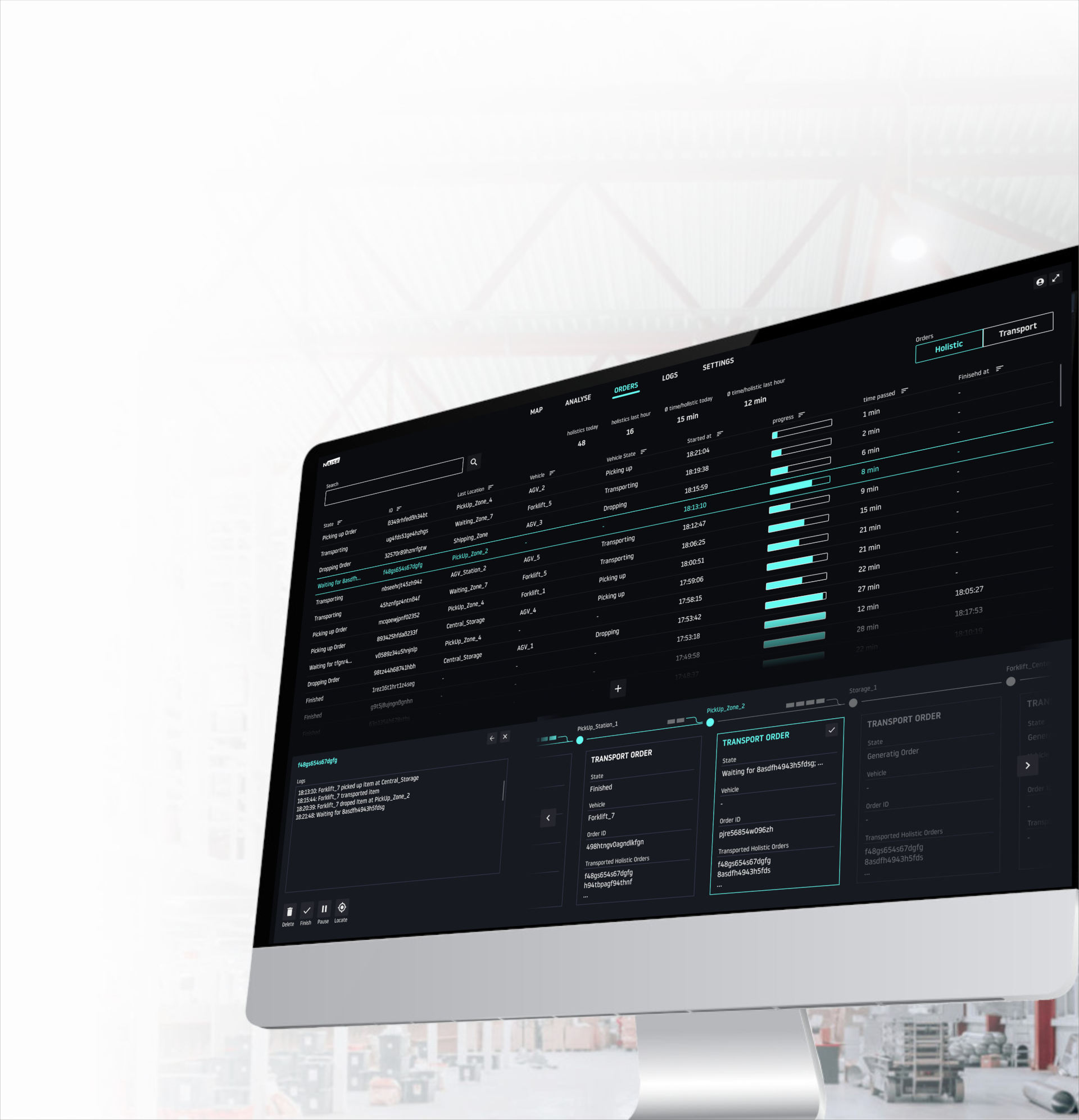NAiSE ORDER MANAGEMENT
18.09.2024 | naise.eu
NAVIGATING THE COMPLEXITIES OF INTRALOGISTICS

THE CHALLENGE OF MATERIAL FLOW MANAGEMENT
Managing material flow in production halls and warehouses is a complex challenge. Trucks deliver and collect materials at various entry points, where they are stored on shelves. When production requires specific materials, they need to be transported seamlessly between halls to ensure efficient production and timely dispatch of final products. Coordinating these multiple pick-up and drop-off points presents a significant logistical challenge.
Intralogistics managers traditionally rely on manual methods and paper-based systems to organize these processes. They define tasks, assign responsibilities, and determine the most efficient pathways while ensuring real-time communication among participants. However, this manual approach often leads to inefficiencies, delays, and communication breakdowns, especially when integrating robotic systems. The complexity of real-time management can cause unexpected disruptions and production halts. As businesses seek more flexibility and efficiency, the shift towards automation and digitalization in intralogistics becomes inevitable.
THE SHIFT TOWARDS AUTOMATION AND DIGITALIZATION
To overcome these traditional challenges, many companies are adopting automation, replacing manual processes with robots. Automation streamlines operations, reduces human error, and enhances overall efficiency. However, successful implementation requires a system that ensures smooth collaboration between human workers, robots, and other transportation vehicles.
NAiSE offers an advanced solution by integrating automation into material flow management. Our platform provides flexibility in managing complex environments, defining the most efficient routes and tasks for all participants—whether an transport mobile robot, forklift, or human operator.
A HOLISTIC APPROACH TO MATERIAL FLOW MANAGEMENT
NAiSE’s holistic approach to material flow management ensures that each transport order is executed by the most capable and resource-efficient participant at any given moment. Our smart algorithms analyze real-time data to dynamically allocate tasks based on the capacity and availability of each vehicle or worker.
Our platform optimizes route planning and provides a visual representation of the entire order management process, enabling users to monitor all transport orders within warehouses and production areas. This transparency improves decision-making and keeps all participants synchronized.
In addition, NAiSE’s platform incorporates advanced cost models to prioritize cost-effective task execution. This ensures that logistics not only operate efficiently but also align with budget constraints. As a result, companies can optimize operations for both speed and cost-effectiveness.
SEAMLESS INTEGRATION WITH ERP AND WMS SYSTEMS
A key feature of NAiSE’s solution is its seamless integration with Enterprise Resource Planning (ERP) and Warehouse Management Systems (WMS). These integrations enable the direct receipt of orders generated by these systems, ensuring that material availability and locations are always accurate. By bridging physical logistics and digital management, NAiSE enhances the efficiency and reliability of intralogistics operations.
In addition to ERP and WMS system integration, NAiSE provides a No-Code Editor that simplifies the process of creating and managing orders. This tool translates complex business-layer language into actionable instructions understood by the platform, offering users the flexibility to create orders manually through the intuitive NAiSE Order Dashboard.
THE BENEFITS OF ADVANCED MATERIAL FLOW MANAGEMENT
Throughout and after the order execution process, users gain valuable insights through advanced visualization tools that provide real-time tracking of current tasks and detailed historical analysis. Users can monitor key performance indicators (KPIs) that evaluate task execution efficiency and receive alerts for any anomalies, enabling proactive issue resolution.
Automating and digitalizing material flow and order management can yield substantial benefits, including reduced labor costs, improved operational efficiency, and enhanced flexibility. NAiSE’s platform provides a comprehensive solution that optimizes logistics, increases transparency, and improves coordination among all participants. This integrated approach ensures smoother, faster, and more adaptable production processes, leading to better outcomes for businesses and their customers.
NAiSE Traffic Manager: Link
Use Case: Link